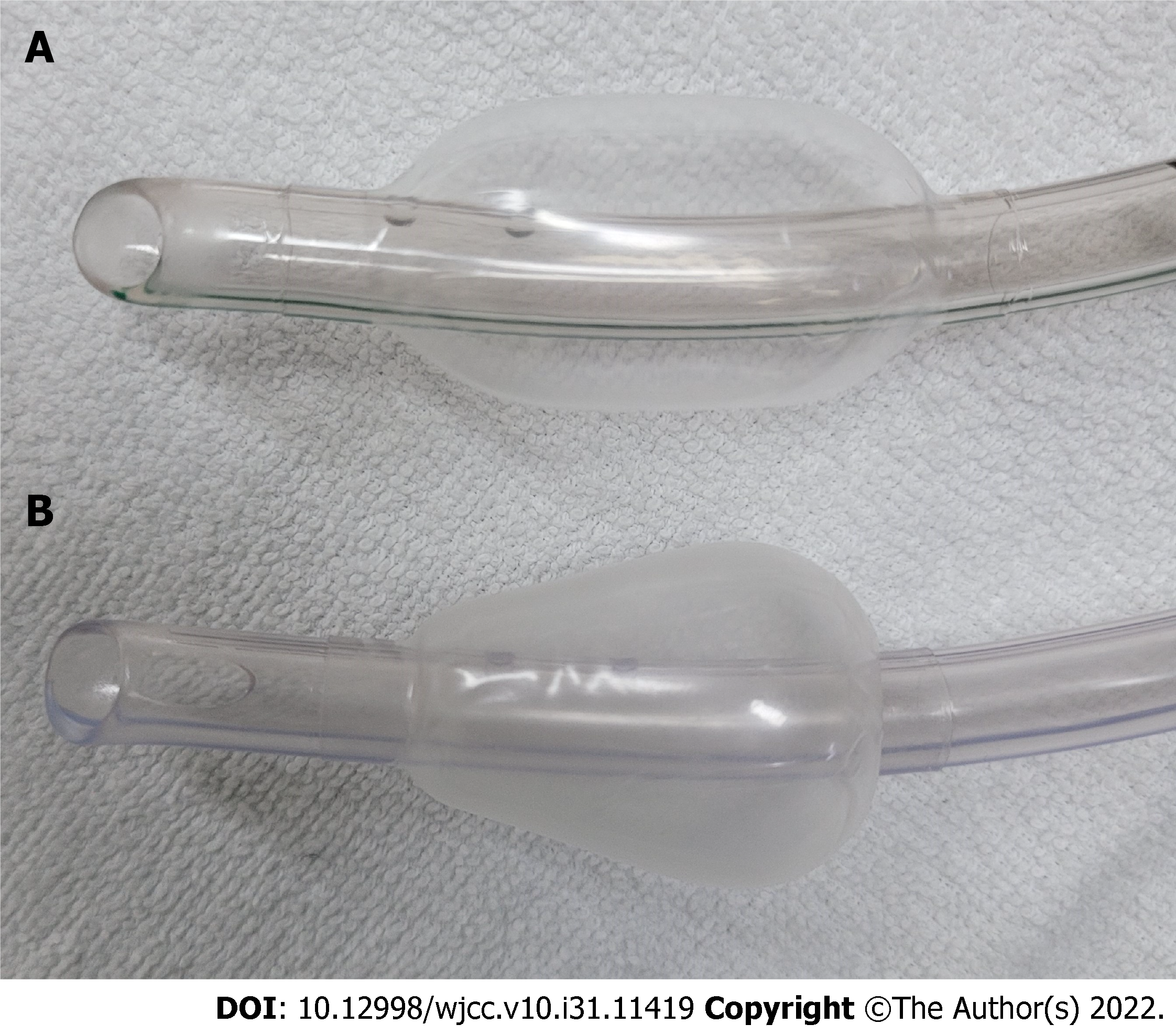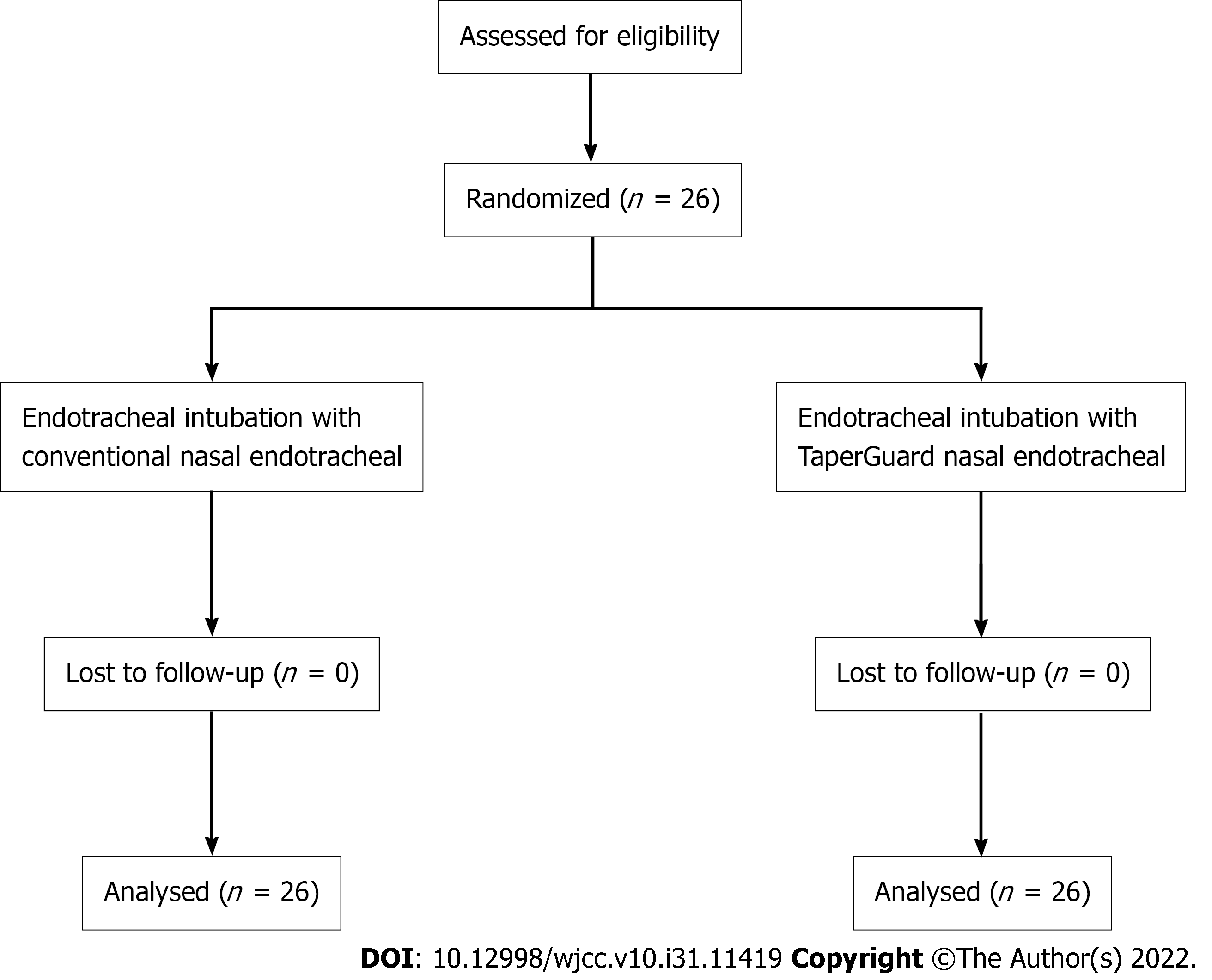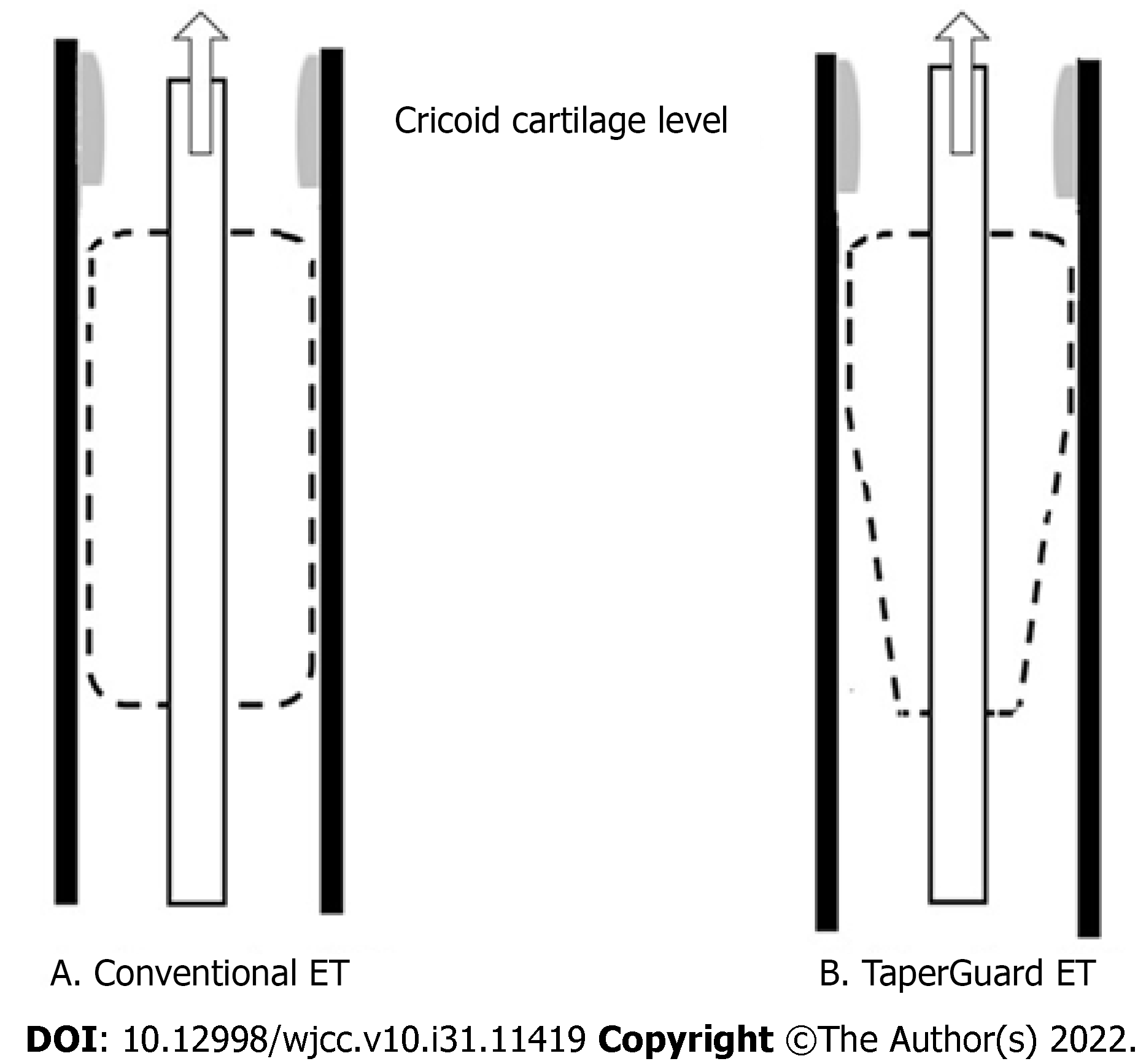Copyright
©The Author(s) 2022.
World J Clin Cases. Nov 6, 2022; 10(31): 11419-11426
Published online Nov 6, 2022. doi: 10.12998/wjcc.v10.i31.11419
Published online Nov 6, 2022. doi: 10.12998/wjcc.v10.i31.11419
Figure 1 Cuff shape.
A: Conventional endotracheal tube; B: TaperGuard endotracheal tube.
Figure 2 Flow diagram of the study.
Figure 3 Cuff inflation of endotracheal tube in the trachea.
The TaperGuard endotracheal tube (ET) with a tapered cuff has smaller cuff volume and narrower tracheal contact than conventional ET. When the intracuff volume are compressed at a narrower and less complaint airway space such as at level of cricoid cartilage, the increase in cuff pressure is significantly higher in the TaperGuard ET than in the conventional ET. ET: Endotracheal tube.
- Citation: Seol G, Jin J, Oh J, Byun SH, Jeon Y. Pressure changes in tapered and cylindrical shaped cuff after extension of head and neck: A randomized controlled trial. World J Clin Cases 2022; 10(31): 11419-11426
- URL: https://www.wjgnet.com/2307-8960/full/v10/i31/11419.htm
- DOI: https://dx.doi.org/10.12998/wjcc.v10.i31.11419











